2024 Hyundai Tucson N Line Hybrid Review: Quick Take

Love It | Leave It |
|---|---|
Finally, the right engine | Not as fuel efficient as other hybrids |
Spacious interior | Missing some safety assists |
Fairly affordable in Canada | Fairly pricey in America |
Or: Everything N Its Right Place.
Hybrids stopped being solely about fuel efficiency ages ago. Nowadays, it’s a real have-baked-good, will-consume affair: often, buyers are getting that traditional advantage alongside better performance than a pure-gas choice. With the price gap between the two so small, it’s become something of a no-brainer to go electrified, so long as the latter was available.
For 2024, Hyundai has expanded the electrified Tucson family with this, the 2024 Tucson N Line Hybrid. We got a brief stint in the compact SUV as part of the Automobile Journalists Association of Canada (AJAC) annual TestFest to see how it fits into the family.
What’s new?
This trim is the big news in Tucson town for ’24. The N Line Tucson was always a logic inconsistency within the Hyundai lineup: the sporty choice amongst the compact SUV’s various flavors, saddled with the base engine? While one hand giveth…
This powertrain has found its way into numerous Hyundai and Kia products, but the Tucson is still one of our fave pairings. A turbocharged 1.6-liter engine pairs with a 44.2-kW electric motor, the latter of which pulls from a 1.49-kWh lithium ion battery pack. Instead of the continuously variable transmission (CVT) that is common amongst hybrids, the Hyundai group shacks this all up with a six-speed automatic. Another change for this year: the hybrid is now only available with all-wheel drive, which was always the case in Canada. (Front-drive was standard in earlier years.)
The N Line treatment amounts to unique bumpers front and rear, along with body-color wheelarches for a more street-friendly appearance. Aluminum trim gets the black-out treatment, and the whole package rolls on very pretty, split-five-spoke 19-inch alloys.
A better drive
We’re very familiar with this hybrid powertrain. What it lacks in ultimate fuel economy—37 mpg or 6.4 L/100 km combined, a few points shy of the RAV4 Hybrid—it makes up for in refinement. It’ll float around on electric power alone for a few blocks or so, but once the gas engine does have to join the party, it doesn’t kick the door in, launch the cat at the fan, and commandeer the party playlist. The 1.6-liter says hello, maybe shakes a few hands, and asks how your significant other is doing. It’s friendly. The turbo torque also means it does its best work early on, so there’s no need to wring its neck to get the full force to the pavement.
The Tucson goes, stops, and turns in a way that is wholly inoffensive, and bang-on with the needs of the target audience. The 19-inch alloys and accompanying low-profile tires do result in a slightly firmer ride than, again, a RAV4, but the trade-off is a more assertive steer on backroads. The Tucson doesn’t hit the sweet mix of mature and fun that a Mazda CX-5 can muster, but it’s closer to that end of the spectrum.
Cabin refinement is some of the best in the segment, with low wind and road noise.
Well-stocked cabin
The N Line sits below the top Tucson trim, so buyers will be missing out on niceties like ventilated front seats, a wireless charger, and—in the US—a heated steering wheel. But the N-branded seats, with their combo of cloth and leather, look and feel great, plus are more breathable than full-leather items. The usual shiny metallic trim around the push-button shifter is now darker for N Line duty, and it’s a handsome switch. Material quality is pretty solid throughout, and we remain big fans of the waterfall-esque dashboard design. If only Hyundai hadn’t gone for all touch controls below the infotainment screen: there’s no feedback.
The Tucson is one of the most spacious offerings in the class, with 41.3 inches (1,050 millimeters) of rear-row legroom. There’s a good amount of natural light thanks to the standard panoramic sunroof as well. There’s also practically zero cargo capacity sacrifice with the electrified powertrain; it’s just 0.4 cubic feet (11 liters) with the seats down.
Dollars and sense
As equipped, the 2024 Hyundai Tucson N Line now runs $38,190 ($42,524 CAD) including destination. While it’s the penultimate step on the Tucson Hybrid walk in the US, the N Line is one of two electrified entry points in Canada; in fact, all Tucsons bar the base model are now hybrids up North. Americans will find it right in-line with RAV4 and CR-V hybrid models, but Canada’s N Line saves thousands over equivalent hybrid competitors.
One thing to note, however: the N Line does miss out on a list of Hyundai’s safety-focused acronyms. No BVM (Blind-Spot View Monitor), HDA (Highway Driving Assist), ROA (Rear Occupant Alert), RSPA (Remote Smark Parking Assist), or SVM (Surround View Monitor). Buyers also miss out on some parking sensors.
Verdict: 2024 Hyundai Tucson N Line Hybrid Quick Take Review
On a practical level, the 2024 Hyundai Tucson N Line Hybrid rights a wrong in the lineup, giving the self-proclaimed sporty choice the sporty engine. This is a well-balanced package with an added dash of style—a no-brainer, if you will.
Become an AutoGuide insider. Get the latest from the automotive world first by subscribing to our newsletter here.

Kyle began his automotive obsession before he even started school, courtesy of a remote control Porsche and various LEGO sets. He later studied advertising and graphic design at Humber College, which led him to writing about cars (both real and digital). He is now a proud member of the Automobile Journalists Association of Canada (AJAC), where he was the Journalist of the Year runner-up for 2021.
More by Kyle Patrick
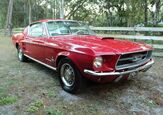
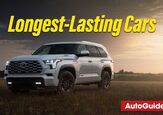

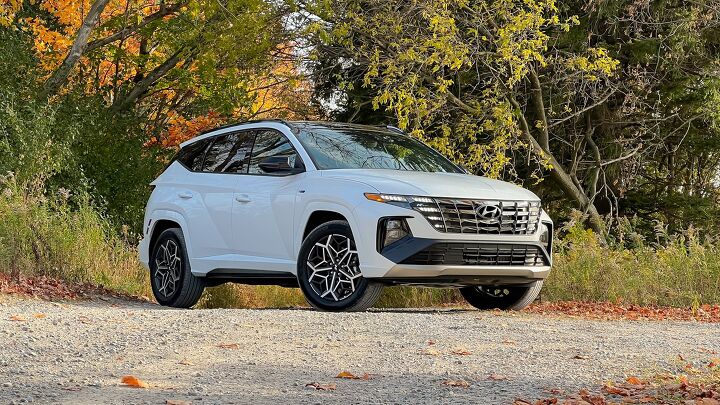
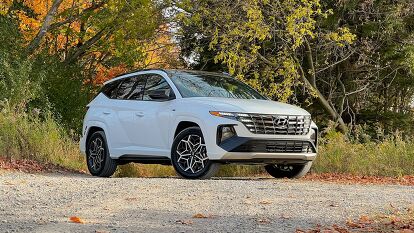




































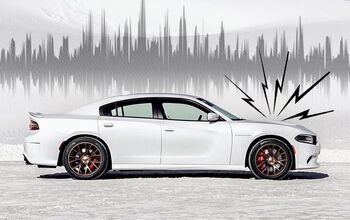

















Comments
Join the conversation
I have been driving my 2017 Tucson EC0 since new. Leased then bought at end. 1.4L Turbo with all the options except moon roof. I had two offers over the years that wanted to buy this from me. Well, its a lot of fun and you stomp the throttle and you GO NOW. My long distance trips @75-80mph return 28-30MPH. One of the cars I won't let go like my 67Cougar.